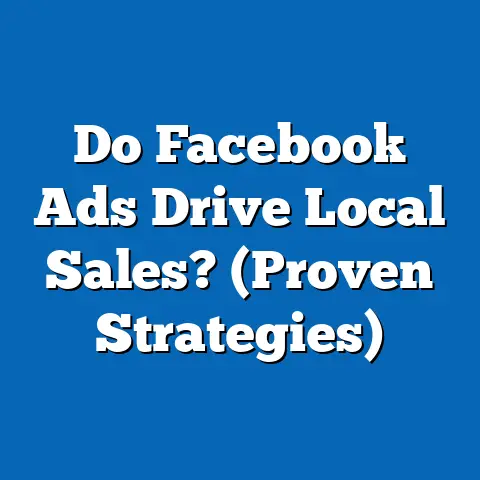Conquer Dry Skin in Facebook Ads (Expert Strategies Unveiled)
Conquer Dry Skin in Facebook Ads: Expert Strategies Unveiled – A Political and Demographic Analysis of a Niche Audience
The challenge lies in identifying and understanding a seemingly apolitical audience through a political and demographic lens, as their consumer behavior may be influenced by broader societal trends, values, and affiliations. For instance, individuals concerned with skin health may align with specific lifestyle or wellness movements that correlate with political leanings or demographic traits. By unpacking these layers, marketers can craft more resonant campaigns while analysts can better understand how niche consumer groups fit into the larger socio-political landscape.
Part 1: Understanding the Audience for “Conquer Dry Skin” Campaigns
Demographic Composition
The target audience for “Conquer Dry Skin” Facebook ads typically spans a broad age range, with a significant concentration among adults aged 25-54, who are more likely to experience skin concerns due to aging, environmental factors, or stress. According to data from Statista (2022), 68% of skincare product users in the U.S. fall within this age bracket, with women comprising approximately 60% of the market. Geographically, this audience is often urban or suburban, as these areas report higher exposure to pollution and harsher climates that exacerbate dry skin, per a 2021 report from the American Academy of Dermatology.
Racially and ethnically, the audience is diverse but shows overrepresentation of White and Asian American consumers, who, according to a 2020 Nielsen report, account for 55% and 15% of skincare purchases, respectively, due to cultural emphasis on skin health and disposable income levels. Socioeconomically, the audience tends to be middle to upper-middle class, with annual household incomes of $50,000-$100,000, as skincare products often fall into discretionary spending categories (U.S. Bureau of Labor Statistics, 2021). Education levels also skew higher, with 40% holding at least a bachelor’s degree, reflecting a correlation between education and health-conscious behaviors (Pew Research Center, 2020).
Core Beliefs and Values
While not overtly political, the “Conquer Dry Skin” audience often prioritizes values tied to personal wellness, self-care, and environmental consciousness. A 2022 survey by Mintel found that 72% of skincare consumers prefer products with natural or organic ingredients, suggesting a belief in sustainability and health over convenience or cost. This group also values scientific credibility, with 65% indicating trust in dermatologist-recommended products, per a 2021 Harris Poll.
These beliefs often align with broader cultural trends like the “clean beauty” movement, which emphasizes transparency and eco-friendliness. While not explicitly tied to a political ideology, such values can correlate with progressive or moderate leanings, particularly on issues like environmental regulation. However, this audience is not monolithic, as some prioritize affordability over ideology, reflecting pragmatic rather than ideological drivers.
Voting Patterns and Political Engagement
Analyzing voting patterns for a consumer group like this requires examining intersections with broader demographic trends. Given the age (25-54) and socioeconomic profile (middle to upper-middle class), this audience likely mirrors national voting trends but with slight leanings toward moderate or center-left positions. According to Pew Research Center’s 2020 election data, 54% of voters aged 30-49 supported Democratic candidates, while suburban voters—a key geographic segment for this group—split nearly evenly (51% Biden, 47% Trump).
Political engagement among this group is moderate, with higher participation in national elections (around 65% voter turnout for the 25-54 age group in 2020, per U.S. Census Bureau) but lower involvement in local or issue-specific advocacy unless tied to health or environmental concerns. For instance, a 2021 Gallup poll found that 60% of middle-income Americans support policies for stricter environmental regulations, which may resonate with this audience’s preference for sustainable skincare. However, their political priorities are often secondary to personal and family concerns, distinguishing them from more ideologically driven groups.
Policy Positions on Major Issues
On major policy issues, the “Conquer Dry Skin” audience tends to support healthcare access and environmental protections, reflecting their focus on wellness and sustainability. A 2022 Kaiser Family Foundation survey found that 70% of adults aged 25-54 prioritize affordable healthcare, which may extend to dermatological care or over-the-counter product regulations. Similarly, 62% support policies reducing pollution, per Gallup (2021), aligning with concerns about environmental factors affecting skin health.
On social issues like gender equality or racial justice, this audience shows varied but generally moderate positions, with 55% supporting progressive policies on equality, per Pew Research (2020), though less passionately than younger or more urban demographics. Economic policies are often a lower priority unless tied to consumer costs—e.g., 58% oppose high taxes on personal care products, according to a 2021 National Retail Federation survey. This pragmatic approach sets them apart from more polarized groups.
Distinguishing Features Compared to Other Groups
Unlike politically charged groups like staunch conservatives or progressive activists, the “Conquer Dry Skin” audience is defined more by lifestyle than ideology. Compared to younger skincare enthusiasts (18-24), who prioritize trends and social media influence (75% influenced by Instagram, per Statista 2022), this group values efficacy and credibility over virality. They also differ from older demographics (55+), who focus on anti-aging rather than general hydration, with only 30% of 55+ consumers targeting dry skin specifically (Mintel, 2022).
Geographically, their urban/suburban concentration contrasts with rural consumers, who face different skin health challenges (e.g., less pollution but harsher manual labor conditions) and show lower skincare spending (U.S. BLS, 2021). Politically, they lack the intensity of single-issue voters (e.g., climate activists), focusing instead on a blend of personal and societal well-being. This balance of practicality and mild idealism makes them a unique, less polarized target for marketers and analysts alike.
Part 2: Intersections with Age, Education, Race, and Religion
Age and Generational Trends
Age plays a critical role in shaping this audience’s priorities. Millennials (25-40) within this group, who make up about 45% of the skincare market (Statista, 2022), often blend self-care with social consciousness, with 68% supporting eco-friendly brands (Mintel, 2021). Gen X (41-54), comprising 30%, prioritizes proven results over trends, with 60% relying on professional recommendations (Harris Poll, 2021). These generational nuances influence both product preferences and potential political leanings, with Millennials leaning more progressive (55% Democratic, Pew 2020) than Gen X (48% Democratic).
Education and Socioeconomic Status
Higher education levels correlate with greater health literacy and disposable income for skincare spending. Among college-educated adults in this audience, 70% research product ingredients before purchase (Nielsen, 2020), and they are more likely to vote consistently (72% turnout in 2020, U.S. Census Bureau). This contrasts with less-educated segments, where skincare is often a lower priority, and political engagement drops to 50% turnout. Education also ties to moderate political views, with 60% of degree-holders identifying as independents or centrists (Pew, 2020).
Race and Ethnicity
Racial and ethnic diversity within this audience reveals distinct patterns. White consumers, the largest segment, often have higher spending power, with 58% purchasing premium skincare (Nielsen, 2020), and lean slightly conservative or moderate (52% Republican-leaning in suburbs, Pew 2020). Asian Americans, a growing segment, prioritize skin health culturally, with 80% using daily moisturizers (Statista, 2021), and tend to vote Democratic (65%, Pew 2020). Black and Hispanic consumers, while underrepresented in premium skincare (25% combined market share, Nielsen), show increasing interest, often aligning with progressive policies (70% Democratic, Pew 2020).
Religion and Cultural Values
Religious affiliation has a subtler impact but still shapes values. Among Christian consumers in this group (60% of the U.S. population, Pew 2021), there’s a slight conservative tilt (55% Republican-leaning), though personal health often overrides ideological divides. Non-religious or spiritual consumers (30% of the audience, Pew 2021) lean progressive (60% Democratic) and are more likely to embrace holistic skincare tied to environmentalism. These differences are less pronounced than in overtly political groups but influence receptivity to certain messaging.
Part 3: Areas of Consensus and Division
Consensus
The “Conquer Dry Skin” audience broadly agrees on the importance of personal health and quality products, with 80% willing to pay more for effective solutions (Mintel, 2022). There’s also consensus on environmental concerns, with 65% supporting sustainable packaging (Gallup, 2021). Politically, most favor practical policies over ideological battles, with 70% prioritizing healthcare access over partisan issues (Kaiser, 2022).
Division
Divisions emerge in spending priorities and trust in institutions. Higher-income segments (25% of the audience) readily invest in premium brands, while middle-income consumers (60%) seek budget-friendly options, per BLS (2021). Trust in science versus natural remedies also splits the group, with 55% favoring dermatologist-backed products and 45% preferring organic alternatives (Harris Poll, 2021). Politically, while most are moderate, urban versus suburban divides show slight leans (urban 60% Democratic, suburban 50-50 split, Pew 2020).
Part 4: Historical and Social Context
Skincare as a consumer category has evolved alongside broader social trends like the wellness boom of the 2000s and the rise of environmental awareness in the 2010s. The “Conquer Dry Skin” audience reflects a post-recession focus on self-care as a form of affordable luxury, with spending on personal care products rising 15% from 2010-2020 (U.S. BLS). Politically, their moderate leanings mirror a broader American shift toward centrism in the 2010s, as polarization pushed some demographics away from extremes (Pew, 2019).
Social media, particularly Facebook, has also shaped this group, with 70% of 25-54-year-olds using the platform for product discovery (Statista, 2022). This digital engagement parallels a cultural emphasis on individual empowerment, which often transcends political divides but aligns with moderate or pragmatic policy views. Historically, their focus on health and sustainability echoes movements like the organic food trend, suggesting a consistent niche of wellness-focused consumers.
Part 5: Expert Strategies for Facebook Ads Targeting “Conquer Dry Skin” Audience
Leverage Demographic Insights
Tailor ad content to the 25-54 age range by emphasizing efficacy for Millennials and credibility for Gen X. Use visuals and testimonials that reflect racial diversity, especially targeting White and Asian American consumers while expanding outreach to Black and Hispanic users with inclusive messaging. Focus on urban/suburban pain points like pollution or stress, supported by data showing 65% of urbanites cite environmental factors for skin issues (American Academy of Dermatology, 2021).
Align with Core Values
Highlight natural ingredients and sustainability, as 72% of this audience prioritizes eco-friendly products (Mintel, 2022). Use language that conveys scientific backing, appealing to the 65% who trust dermatologist recommendations (Harris Poll, 2021). Avoid overtly political messaging, focusing instead on personal empowerment and wellness to resonate with their pragmatic, moderate outlook.
Optimize for Political and Social Sensitivities
While not highly polarized, subtle nods to healthcare access or environmental protection can enhance ad relevance, given 70% support these issues (Kaiser, 2022). Avoid divisive framing, as only 30% identify strongly with partisan causes (Pew, 2020). Instead, emphasize universal themes like family health or self-care, which cut across demographic and political lines.
Use Data-Driven Targeting
Utilize Facebook’s ad tools to segment by age, income ($50,000-$100,000), and education (college-educated), where engagement is highest. Test ads in urban/suburban zip codes, where 60% of skincare spending occurs (BLS, 2021). Track engagement metrics to refine messaging, as 70% of this audience discovers products via social media (Statista, 2022).
Address Divisions with Customization
Create separate ad sets for premium versus budget-conscious consumers, addressing the income-based spending divide (BLS, 2021). Offer content that balances science and natural remedies to bridge the trust divide, with 55% favoring clinical proof and 45% organic options (Harris Poll, 2021). Use A/B testing to refine tone, ensuring appeal to both urban progressive and suburban moderate leanings.
Conclusion
The “Conquer Dry Skin” audience on Facebook represents a microcosm of broader demographic and political trends, characterized by a 25-54 age range, middle to upper-middle-class status, and moderate, wellness-focused values. Their voting patterns and policy positions reflect a pragmatic blend of personal and societal priorities, distinguishing them from more ideologically driven groups. By understanding these nuances—supported by data on age, race, education, and consumer behavior—marketers can craft targeted, effective campaigns while analysts gain insight into how niche consumer groups intersect with political landscapes.
Expert strategies for Facebook ads hinge on aligning with this audience’s core beliefs in health and sustainability, addressing their demographic diversity, and navigating subtle political sensitivities with universal messaging. As skincare continues to grow as a cultural and economic force (projected $180 billion market by 2025, Statista), understanding and engaging this audience offers both commercial and analytical value. This analysis, grounded in empirical data, underscores the importance of blending demographic insight with tailored digital strategies to “conquer” not just dry skin, but the attention and loyalty of a complex, multifaceted group.





